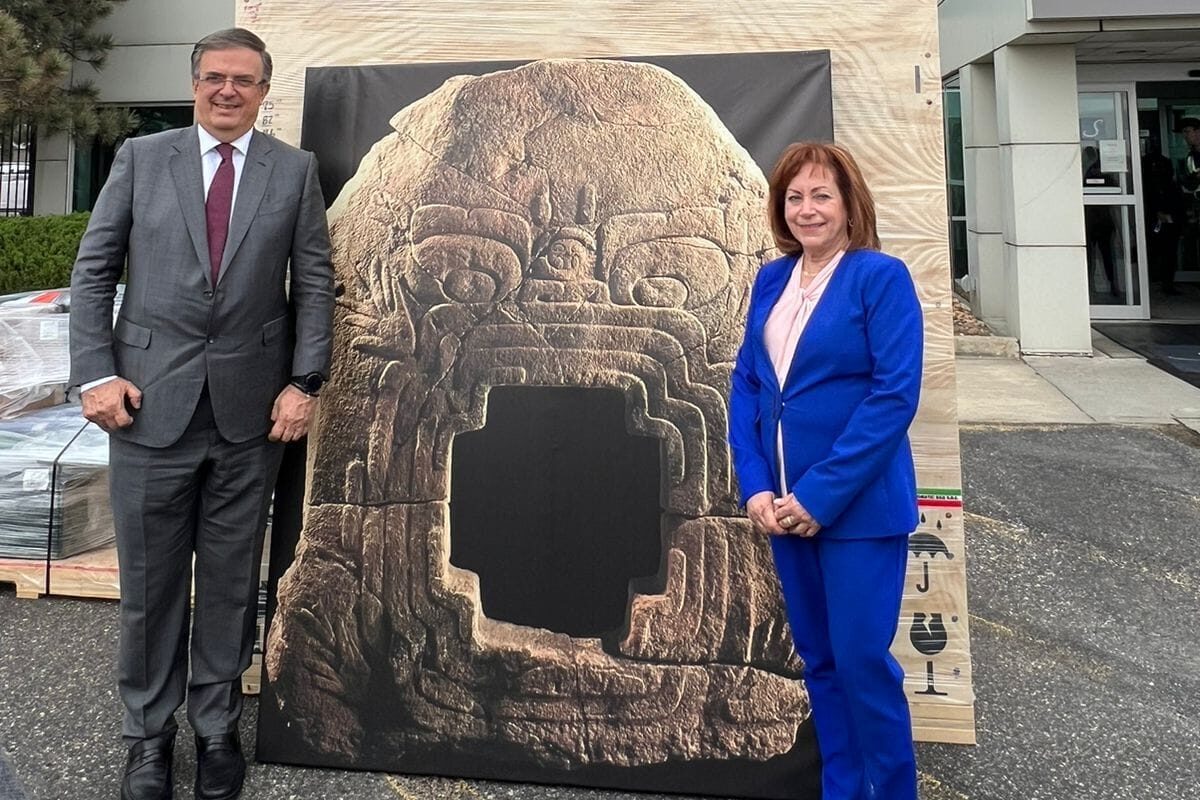
Mexico announced Friday that a huge 2,500-year-old Olmec stone sculpture has been returned from the United States.
The almost six-foot-tall (two-meter) “Monster of the Earth” sculpture appears to represent the gaping maw of a monster that is big enough to swallow people, and may represent a symbolic entrance to the underworld.
Experts say the sculpture is important because of the insights it provides on the cosmological vision of the Olmecs, considered a founding culture of Meso-America.
Foreign Relations Secretary Marcelo Ebrard said the sculpture was handed over at the Mexican consulate in Denver, Colorado, on Friday.
“It was like an open wound, not having this artifact,” Ebrard said.
Experts believe the sculpture was taken clandestinely in the 1950s from Chalcatzingo, a lesser-known ruin site south of Mexico City.
It was publicly identified in the U.S. in 1968 by the archeologist David Grove in the magazine American Antiquity and was in a New York museum in the early 1970s, according to Mexican General Consul for New York Jorge Islas. It was the most sought-after Olmec piece over the last 50 years.
Islas was tapped by Ebrard to lead recovery and repatriation efforts last June.
Mexican General Consul for Colorado Pável Mélendez Cruz called it a historic moment for Mexico.
"We are taking back home a very important piece of the ancient Olmec culture," Mélendez Cruz said.
As of March of this year, almost 11,500 archeological goods were recovered by Mexico in the last five years, under Mexican President Andrés Manuel López Obrador's administration. Many have been recovered from various European countries, according to Mélendez Cruz.
The sculpture, which weighs about one ton, is made of volcanic rock known to have been in the region for over 21,000 years, according to Mario Cordova Tello, an archeologist with the National Institute of Anthropology and History in Mexico. It was sent to the Mexican state of Morelos where it originates.









